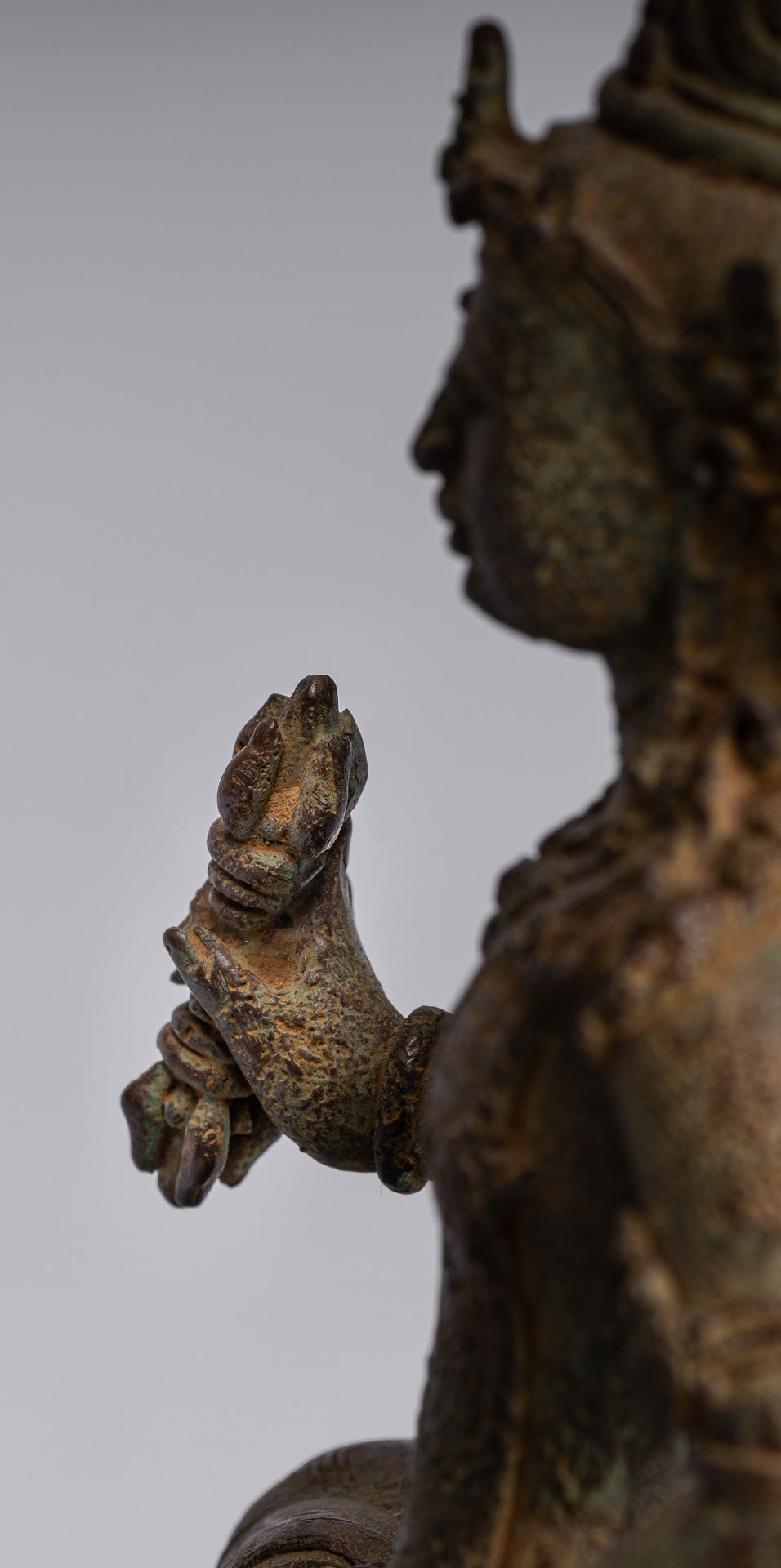
Vishnu and His Vajra: The Protector and His Thunderbolt
Introduction
In the rich tapestry of Hindu mythology, Vishnu stands as one of the principal deities, revered as the preserver and protector of the universe. Among the many symbols and weapons associated with him, the vajra (thunderbolt) holds a unique place.
This powerful weapon, often depicted in the hands of gods and mythological figures, signifies the indomitable force and divine authority wielded by Vishnu.
In this blog post, we delve into the significance of Vishnu and his vajra, exploring their roles in Hindu mythology, symbolism, and cultural impact.
Vishnu: The Preserver of the Universe
Vishnu is one of the Trimurti, the holy trinity of Hinduism, which also includes Brahma (the creator) and Shiva (the destroyer). Vishnu’s primary role is to maintain the cosmic order (dharma) and protect the universe from chaos and destruction. His compassionate nature and commitment to preserving balance make him a beloved deity among devotees.
Attributes and Symbols of Vishnu
Vishnu is commonly depicted with four arms, each holding a symbolic item that represents his divine qualities and powers:
- Chakra (Discus): The Sudarshana Chakra represents the mind and the power to destroy evil.
- Shankha (Conch Shell): The Panchajanya represents sound (Om) and the cosmic space.
- Gada (Mace): The Kaumodaki symbolizes physical strength and the power to rule.
- Padma (Lotus Flower): The lotus represents purity and spiritual liberation.
The Vajra: Symbol of Indomitable Power
The vajra, meaning "thunderbolt" or "diamond" in Sanskrit, is a weapon of immense significance in Hinduism, Buddhism, and Jainism. It symbolizes unyielding power, resilience, and spiritual might. In the context of Vishnu, the vajra represents the ultimate weapon that can vanquish any evil and restore cosmic order.
Origins and Mythological Significance of the Vajra
The vajra’s origins are deeply rooted in ancient Indian mythology. It is famously associated with Indra, the king of gods and the god of thunder and rain, who wields the vajra as his primary weapon. According to Hindu mythology, the vajra was created from the bones of the sage Dadhichi, who sacrificed himself to provide the gods with a weapon capable of defeating the demon Vritra.
In some narratives, Vishnu is also depicted holding or wielding the vajra, symbolizing his supreme authority and invincible power. The integration of the vajra into Vishnu’s iconography underscores his role as a protector who can wield destructive power to preserve righteousness and cosmic balance.
Symbolism of Vishnu’s Vajra
- Divine Authority: The vajra in Vishnu’s hand signifies his ultimate authority over the universe. It represents his ability to enforce divine law and order, ensuring that dharma is upheld.
- Protection and Preservation: As a preserver deity, Vishnu uses the vajra to protect the world from malevolent forces. It embodies his commitment to safeguarding creation and maintaining balance.
- Destruction of Evil: The vajra’s thunderbolt-like power symbolizes the destruction of ignorance, evil, and darkness. It is a reminder of Vishnu’s role in eradicating threats to cosmic harmony.
- Spiritual Power: Beyond physical might, the vajra represents spiritual enlightenment and indestructibility. It signifies the unbreakable and eternal nature of the divine truth that Vishnu upholds.
Cultural and Artistic Representations
Vishnu’s depiction with the vajra varies across different regions and artistic traditions. In many South Indian temples, intricate sculptures and reliefs showcase Vishnu with his traditional attributes, occasionally including the vajra. These representations serve as a testament to the deity’s multifaceted nature and the rich symbolic heritage of Hindu iconography.
In literature and art, the vajra’s presence in Vishnu’s iconography is a powerful visual and narrative element. It reinforces his image as a formidable protector and an embodiment of divine strength. Artists and sculptors often emphasize the vajra’s radiant and awe-inspiring appearance, highlighting its significance in the hands of the preserver deity.
Modern-Day Relevance
The symbolism of Vishnu and his vajra continues to resonate in contemporary times. In a world often marked by turmoil and challenges, the vajra serves as a metaphor for resilience, protection, and the triumph of good over evil. Devotees look to Vishnu and his vajra for strength and guidance, finding solace in the assurance of divine protection and justice.
Moreover, the vajra’s representation in art, literature, and popular culture helps keep the rich mythological traditions of Hinduism alive. It inspires new interpretations and adaptations, ensuring that the timeless values embodied by Vishnu and his vajra remain relevant and influential.
Conclusion
Vishnu and his vajra represent a profound synthesis of divine authority, protection, and spiritual power. The thunderbolt weapon, emblematic of unyielding strength and the destruction of evil, complements Vishnu’s role as the preserver of the universe.
Through the lens of mythology, symbolism, and cultural representation, we gain a deeper appreciation for the enduring legacy of Vishnu and his vajra in Hindu tradition.
As we explore these ancient symbols, we find timeless truths that continue to inspire and guide us in our quest for balance and righteousness.





















